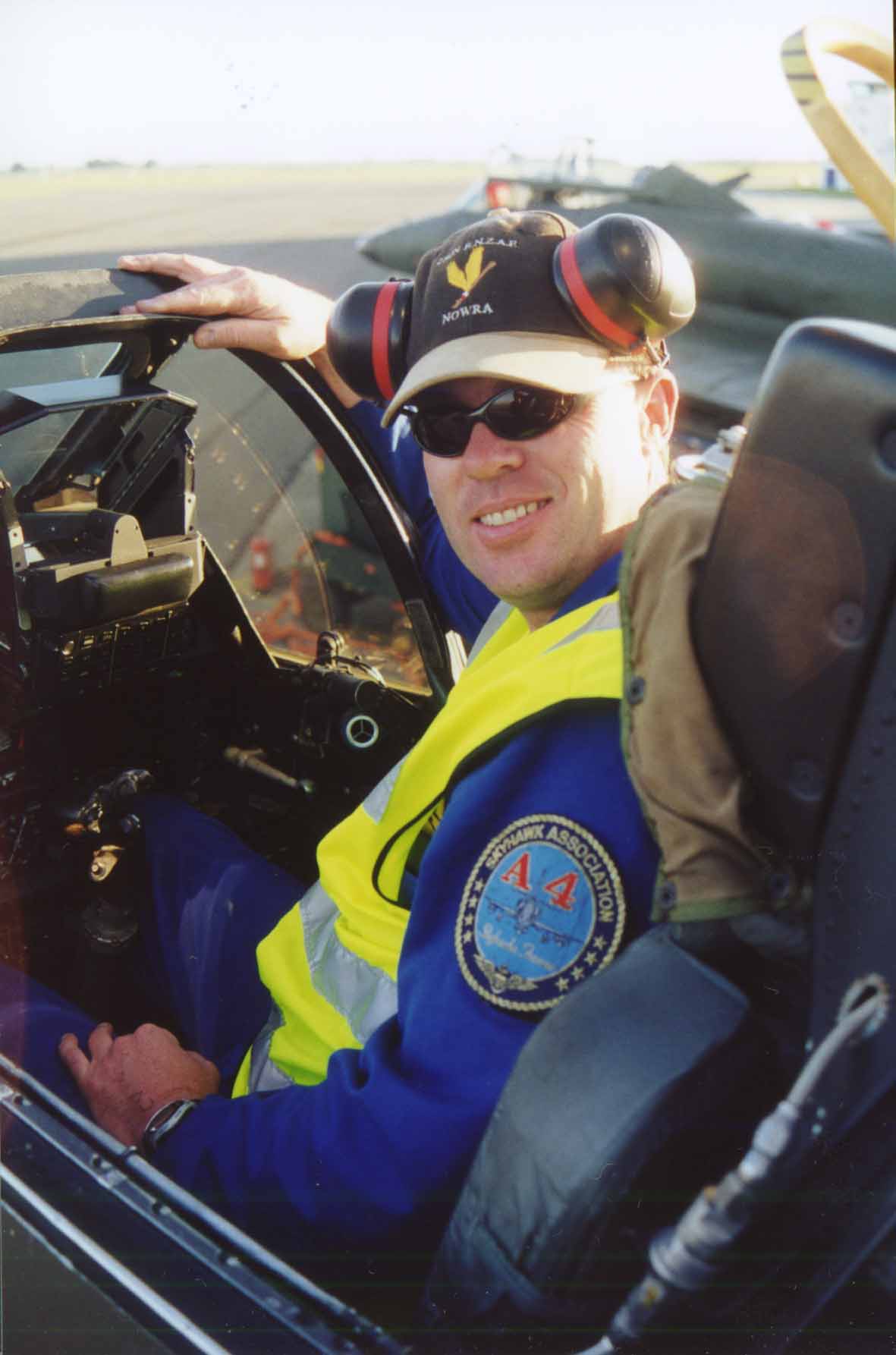Post by flyjoe180 on Oct 22, 2007 13:03:31 GMT 12
WELLINGTON — Military leaders told audiences at an industry conference here that the New Zealand Defence Force (NZDF) today faces plenty of challenges, including money and personnel.
“Remembering to take a joint approach in everything we do” is a big problem for the whole force, Rear Adm. Jack Steer, commander of Joint Forces New Zealand, said at the Defence Industry Association’s 10th annual forum, held Oct. 9-10.
But Steer, who will take over as vice chief of the NZDF in February, noted the asymmetry between neighbor Australia’s defense budget and that of New Zealand: “We would love to have the budget [the Australian Defence Force] is dealing with.”
Air Commodore Kevin Short, recently appointed the military’s assistant chief of development, agreed.
“We don’t have 22 billion dollars like Australia, more like 1 billion for the next six years,” he said.
The New Zealand defense budget for 2007-08 is 1.9 billion New Zealand dollars ($1.4 billion), and will rise slightly to 1.97 billion New Zealand dollars by 2010-11.
Capt. Fred Keating, the Navy’s assistant chief for capability, said it is a continuous struggle for the NZDF to attract and retain the right people.
More than 670 personnel are deployed around the world on operations and “defense diplomacy,” Steer said.
“It’s always the majors and the lieutenant colonels and senior NCOs; we don’t actually deploy large numbers of [low-ranking] troops,” he said.
“They always want someone who has been in the military for 15 or more years … so although the numbers are not great, the impact is quite significant. It rips the heart out of our organization.”
The nzdf has 13,000 personnel, including 4,000 reserve forces and civilian staff
One current deployment is in Lebanon, where a team of Army engineers and Navy divers is “doing explosive ordnance disposal,” Steer said.
Perceptions were mentioned by Scott Riddle of NZ Trade & Enterprise, who told the forum that a survey earlier this year showed there is “very limited awareness in New Zealand and Australia of New Zealand’s defense industry capability.”
Displays at the conference showed a few examples of how local companies have already helped the NZDF solve some of its problems, including keeping the cabins of Navy helicopters dry.
Matthew Bouzaid, general manager of Covertex, told Defense News that the country’s Air Force came to the company seeking a means of containing the seawater deposited in the rear cabin of SH-2G Seasprite helicopters by Navy divers and people rescued at sea.
Covertex designed a lining, tailored to fit the Seasprite cabin without gaps around such things as seat legs, thus preventing the seawater from contaminating the helicopter’s structure and avionics, Bouzaid said. The lining, attached by Velcro, may be safely drained once the flight has ended.
Battle Lab Beginnings
Maj. Jim Dryburgh, capability manager for the Army General Staff, told the forum about the Army’s Battle Lab, established in April 2006.
“There is no manpower dedicated to the Battle Lab; it really is a mass of equipment and of concepts,” he said. “Essentially we are trying to develop a language so that the war fighter can interact with the engineer and tell us what their user requirements are.
“From 2012 onward, [we] will start to deliver a C4ISR system, and what we have to do is set the preconditions for the engineers and the war fighters. I don’t believe this is technically difficult … but at this stage, we would not be able to exploit it because we don’t have the expertise, the experience and the depth to be able to do that.”
Industry support includes the New Zealand company Eagle Technology, as well as Viasat, Northrop Grumman UK, Cisco and Twisted Pair Solutions.
Dryburgh told the forum that “2012 is not an end state, but a start state.”
Col. Phil Collett, assistant chief of the General Staff (Capability), said rear areas were no longer safe havens: “Even support personnel such as military police now need to be equipped like infantry with body armor and night-vision goggles.”
He said the introduction of Land C4 in 2012 would be the biggest step forward for the Army since the introduction of radios.
Part of the nzdf’s network-centric effort, Land C4 covers the land tactical command, control, communications and computers part of C4ISR, which in turn is linked to Army trunk communications and joint communications modernization, all of which are part of the Defence Forces network-enabled capability.
Air Commodore Stewart Baillie, who leads the Joint Logistics and Support Organisation (JLSO), told the forum that the JLSO’s mission is “quality, quality, quality,” while Bruce Green, deputy secretary of defense for acquisition, described the Navy’s new multirole vessel Canterbury as "a national asset."
E-mail: nframpton@defensenews.com.
www.defensenews.com/story.php?F=3120190&C=asiapac
“Remembering to take a joint approach in everything we do” is a big problem for the whole force, Rear Adm. Jack Steer, commander of Joint Forces New Zealand, said at the Defence Industry Association’s 10th annual forum, held Oct. 9-10.
But Steer, who will take over as vice chief of the NZDF in February, noted the asymmetry between neighbor Australia’s defense budget and that of New Zealand: “We would love to have the budget [the Australian Defence Force] is dealing with.”
Air Commodore Kevin Short, recently appointed the military’s assistant chief of development, agreed.
“We don’t have 22 billion dollars like Australia, more like 1 billion for the next six years,” he said.
The New Zealand defense budget for 2007-08 is 1.9 billion New Zealand dollars ($1.4 billion), and will rise slightly to 1.97 billion New Zealand dollars by 2010-11.
Capt. Fred Keating, the Navy’s assistant chief for capability, said it is a continuous struggle for the NZDF to attract and retain the right people.
More than 670 personnel are deployed around the world on operations and “defense diplomacy,” Steer said.
“It’s always the majors and the lieutenant colonels and senior NCOs; we don’t actually deploy large numbers of [low-ranking] troops,” he said.
“They always want someone who has been in the military for 15 or more years … so although the numbers are not great, the impact is quite significant. It rips the heart out of our organization.”
The nzdf has 13,000 personnel, including 4,000 reserve forces and civilian staff
One current deployment is in Lebanon, where a team of Army engineers and Navy divers is “doing explosive ordnance disposal,” Steer said.
Perceptions were mentioned by Scott Riddle of NZ Trade & Enterprise, who told the forum that a survey earlier this year showed there is “very limited awareness in New Zealand and Australia of New Zealand’s defense industry capability.”
Displays at the conference showed a few examples of how local companies have already helped the NZDF solve some of its problems, including keeping the cabins of Navy helicopters dry.
Matthew Bouzaid, general manager of Covertex, told Defense News that the country’s Air Force came to the company seeking a means of containing the seawater deposited in the rear cabin of SH-2G Seasprite helicopters by Navy divers and people rescued at sea.
Covertex designed a lining, tailored to fit the Seasprite cabin without gaps around such things as seat legs, thus preventing the seawater from contaminating the helicopter’s structure and avionics, Bouzaid said. The lining, attached by Velcro, may be safely drained once the flight has ended.
Battle Lab Beginnings
Maj. Jim Dryburgh, capability manager for the Army General Staff, told the forum about the Army’s Battle Lab, established in April 2006.
“There is no manpower dedicated to the Battle Lab; it really is a mass of equipment and of concepts,” he said. “Essentially we are trying to develop a language so that the war fighter can interact with the engineer and tell us what their user requirements are.
“From 2012 onward, [we] will start to deliver a C4ISR system, and what we have to do is set the preconditions for the engineers and the war fighters. I don’t believe this is technically difficult … but at this stage, we would not be able to exploit it because we don’t have the expertise, the experience and the depth to be able to do that.”
Industry support includes the New Zealand company Eagle Technology, as well as Viasat, Northrop Grumman UK, Cisco and Twisted Pair Solutions.
Dryburgh told the forum that “2012 is not an end state, but a start state.”
Col. Phil Collett, assistant chief of the General Staff (Capability), said rear areas were no longer safe havens: “Even support personnel such as military police now need to be equipped like infantry with body armor and night-vision goggles.”
He said the introduction of Land C4 in 2012 would be the biggest step forward for the Army since the introduction of radios.
Part of the nzdf’s network-centric effort, Land C4 covers the land tactical command, control, communications and computers part of C4ISR, which in turn is linked to Army trunk communications and joint communications modernization, all of which are part of the Defence Forces network-enabled capability.
Air Commodore Stewart Baillie, who leads the Joint Logistics and Support Organisation (JLSO), told the forum that the JLSO’s mission is “quality, quality, quality,” while Bruce Green, deputy secretary of defense for acquisition, described the Navy’s new multirole vessel Canterbury as "a national asset."
E-mail: nframpton@defensenews.com.
www.defensenews.com/story.php?F=3120190&C=asiapac












